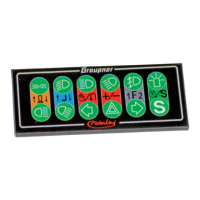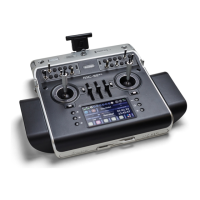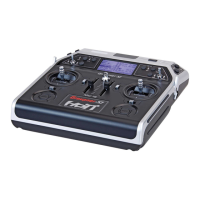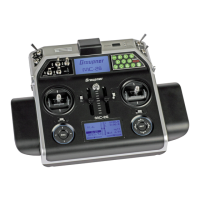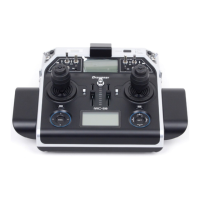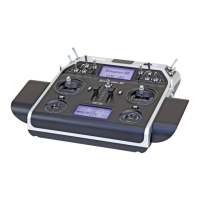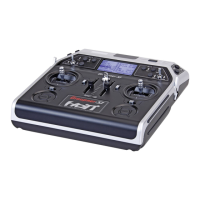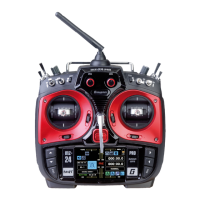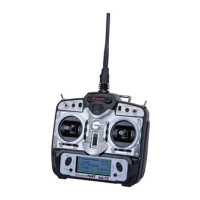295
Programming examples - Winged models
Brake
Curve
off Point
Output
Input +100%
–25%
H
+
–
100
O U T P U T
–25%
Elevator
Normal
After exiting the "Brake settings", the "Aileron differ-
entiation can be set:
This serves to eliminate the negative torque. The
downward deflected aileron normally generates a
higher level of resistance during the flight than when
deflected upward the same distance, whereby the
model is pulled to the "wrong" side. In order to pre-
vent this, with the input of a differentiation of the
travel of the respective servo deflected downward is
reduced accordingly. A value between 20 and 40 %, in
this case, seldom arises, however, the "correct" set-
ting must be sought.
And this differentiation disappears with the
option “D.red” during the actuation of the
brake control stick back to variable extent,
see left.
The option "Aileron 2 4 Rudder" also serves a
similar purpose, as well as for the comfortable control
of a model. A value of about 50 % is a practical initial
value. However, this function should be made switch-
able with the assignment of a switch if you ever have
aerobatic flight ambitions. (The author, for example,
switches off this mixer "automatically" when switching
to the "Speed" flight phase, in which he assigns both
options to the same switch accordingly.)
The last option in the »Wing mixers« menu, the
"Elevator 3 6 Flap" mixer, is not yet of interest at
the moment.
If the model-specic settings were made thus
far, the initial start can be considered. If
course, at rst you should perform a "dry
run", meaning you should carefully check all the
settings once again on the ground. Incorrect pro-
gramming can damage more than just the model! In
case of doubt, ask the advice of an experienced
model pilot.
If you should find during the testing that one or mul-
tiple settings must be made for the adjustment of
the rudder effects to your control habits, the control
throws are too long or short on the whole, you should
adjust this in the …
»Dual Rate / Expo« (page 120)
… to your own requirements and habits.
"Dual Rate" establishes a relationship between stick
travel and control travel, see page 120:
0%
0%
0%
Aileron
Elevator
Rudder
DUAL
––––––
–––
SEL
–––
–––
–––
100%
100%
100%
EXPO
SEL
On the other hand, if the maximum throws are OK
and only the reactions around the centre position are
to strong for more sensitive controls, then the "expo-
nential" functions comes (additionally) into play:
0%
0%
0%
Aileron
Elevator
Rudder
DUAL
–––
–––
SEL
–––
–––
–––
100%
100%
100%
EXPO
SEL
Move desired switch
to ON position
(ext. switch: ENTER)
Normal
3
If a switch is also assigned, switching can even take
place between two dual-rate/expo settings during the
flight.
This is similar for the option …
»Channel 1 curve« (page 128)
Channel 1 CURVE
Curve
off Point
Output
Input 0%
0%
?
+
–
100
O U T P U T
0%
With this option, one or multiple points of the control
curve of the throttle/brake stick can be influenced in
such a way that a pleasant or even purposeful behav-
ior is guaranteed.
An example of this would be the "dead" travel
of spoilers. The aps rst pass through this
after a certain "idle travel" of the brake stick
from the wing. With a corresponding "bending" of the
curve, the "dead' travel is covered more quickly. The
spoilers come out from the wing earlier and then the
remaining travel can be controlled with greater
sensitivity. (This also applies for the control of a
motor in the same manner, which can be controlled
through C1 as an alternative.)
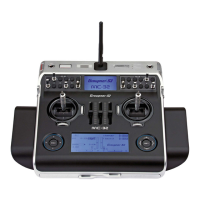
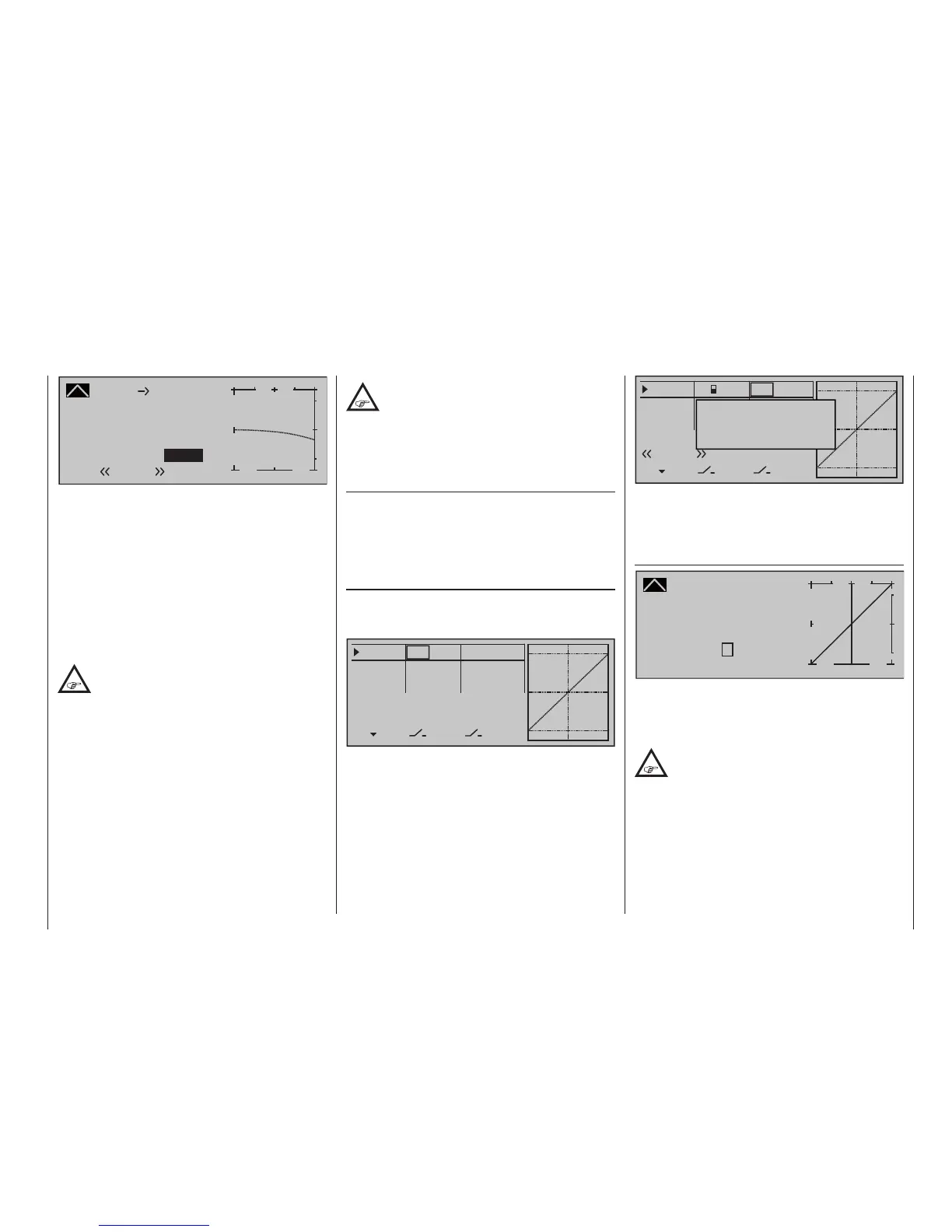